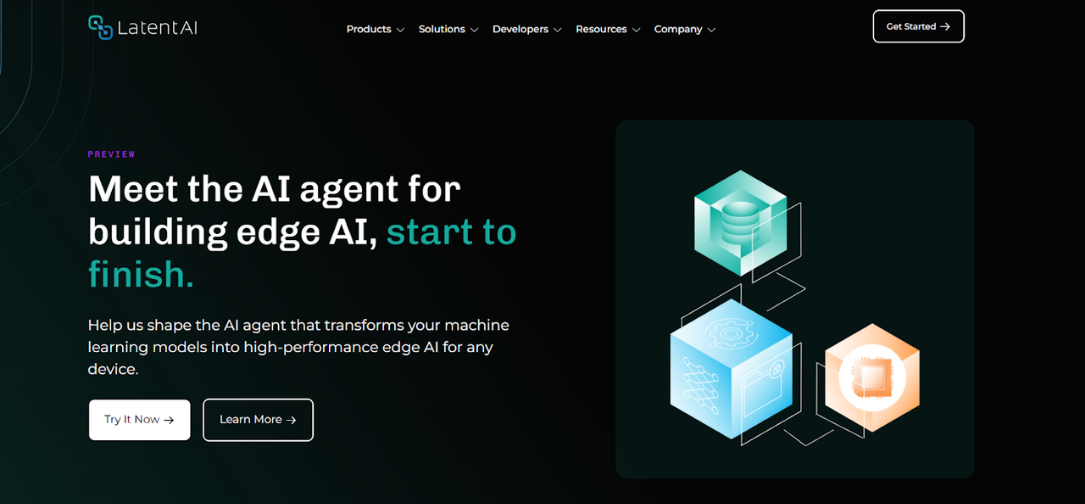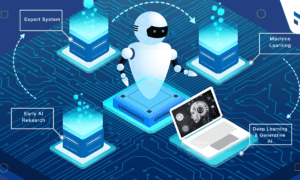Major enterprises are increasingly relying on artificial intelligence (AI) to enhance their organizational functionality and productivity. However, they are stuck in a frustrating cycle where they have AI models that work great in laboratories but not so great for deployment on actual edge devices. New AI models typically slow down when deployed to edge devices due to issues related to memory, computing capability, latency, and power usage.
It usually takes weeks of trial and error before developers can detect all the compatibility and performance issues between the AI models and the device hardware. Only then can they deploy the AI models onto edge devices. This kind of “model-to-hardware” guessing game is slowing down AI innovation and delaying the time it takes companies to bring new products and services to the marketplace.
Fortunately, there is a new agentic AI platform designed to eliminate the model-to-hardware guessing game. That platform is called Latent Agent.
What is a Latent Agent?
Latent AI is a new company that provides AI and machine learning solutions to businesses. On Tuesday, June 17, 2025, Latent AI announced the launch of a new agentic AI platform, Latent Agent, which enables AI edge developers to describe their deployment needs in plain English, eliminating the need for trial and error. That way, developers are empowered with precise model-to-hardware connections for faster deployment of AI projects.
Additionally, developers can automatically receive optimized AI model recommendations based on real-world performance data from over 200,000 hours of operational use of edge devices. As a result, the Latent Agent platform can significantly reduce deployment times for developers from weeks to hours. It even gives smaller AI teams the ability to deploy AI models at an enterprise scale without needing any specialized hardware knowledge or an advanced degree in computer science or hardware optimization.
The Natural Language Interface That Works Directly in VS Code
One of the most beneficial aspects of Latent Agent is its natural language interface that works directly in Visual Studio (VS) Code. As you probably know, VS Code is a widely popular integrated development environment from Microsoft. Since VS Code is integrated with Latent Agent, users can easily describe their needs in plain English to achieve the desired results. The AI will automatically handle the complex coding and multi-step tasks to streamline the process for the users.
For example, if you wanted to develop an AI model that can “operate under 30ms on a Qualcomm chip,” just type those words into the platform as written. Latent Agent will then utilize its AI and machine learning technology to produce an optimized AI model solution that supports your hardware requirements.
Traditionally, AI model optimization depended on studying benchmark data, which is a collection of data points collected in laboratories and compared to industry standards. However, benchmark data never provided a clear and precise reflection of how AI models performed on edge devices in the real world.
Latent Agent is a revolutionary platform that is continuously trained and improved using over 200,000 hours of data from edge devices deployed in the real world. Due to this extensive training, it understands how different AI models perform in various unpredictable real-world scenarios and edge environments.
Latent Agent analyzes the hours of real-world data to produce insightful information and AI model recommendations that can deliver reliable performances for users’ edge devices. Therefore, you just have to describe what you want in plain English and let the AI use its real-world data to make the best recommendations for you.
Adaptive Models That Automatically Detect and Fix Performance Issues
Another attractive benefit of Latent Agent is its self-healing models. These models can automatically detect and resolve performance issues as soon as they are identified. Some performance issues occur after models are deployed, while others arise from new updates, changing conditions, or other unpredictable environmental variables.
Latent Agent can automatically initiate corrective actions to resolve these issues in edge AI devices, reducing downtime and sustaining productivity for the enterprise. Self-healing models are particularly helpful for managing devices in remote areas with limited human intervention. Rather than waiting weeks for a human to fix the performance issues, the self-healing models will quickly fix and optimize the devices to keep them running smoothly.
Real Examples of How This Changes the Game for Enterprise AI Teams
Latent Agent is the agentic expansion platform of Latent AI’s flagship edge AI modeling solution, the “Latent AI Efficient Inference Platform” (LEIP), which is already delivering incredible results in several key industries.
Below are some real-world examples of how LEIP has helped enterprise AI teams in a wide range of diverse fields:
1) Navy Task Force
LEIP assisted the United States Navy Task Force in deploying and updating its automatic target recognition models at a reliable and satisfactory speed to support its operations. The Navy Task Force was able to maintain complete confidence in its performance to execute some critical missions successfully.
Previously, deploying AI models across numerous edge devices was a time-consuming process for the Navy, as it required precise configuration to overcome difficult environmental constraints and diverse hardware profiles. Thanks to LEIP, the Navy’s enterprise AI teams can easily describe their operational needs in basic English, enabling them to receive optimized AI models ready for deployment in real-world settings.
2) Gartner Peer Insights
Gartner Peer Insights utilized Latent AI models for research purposes and to reduce inferencing time. They managed to reduce model deployment time from weeks to days, even in some cases down to a single day. Another data science insider praised the platform’s integration with VS Code, noting how it allows junior developers to make more valuable contributions to AI model deployments for edge devices.
3) Future of Sports
LEIP has enabled the Future of Sports (FSP) enterprise to deploy advanced edge computing AI technology across thousands of different sports venues. By doing this, FSP managed to transform large sports venues through instant, automated, real-time data processing. One notable example is when FSP utilized LEIP to enhance its bowling venues by enabling AI to run on each lane and analyze every ball roll with remarkable speed and accuracy.
Conclusion
Latent Agent is a catalyst for how AI will be delivered to edge devices in the future. This revolutionary technology eliminates the guesswork and trial-and-error associated with model-to-hardware deployment. It offers a future where scaling AI across an enterprise of edge devices is faster and easier while also detecting and resolving performance issues quickly.
Within five years, Latent Agent is likely to become the new standard for delivering AI to edge devices.

































